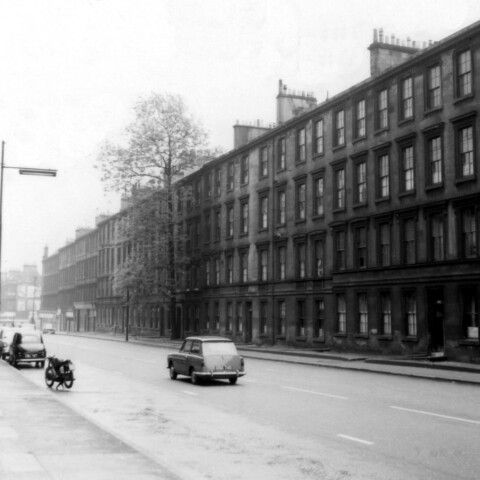 MORE THAN ONCE in recent conversation the issue has come up of the recorded snapshot versus additive-production debate. That is that originally, music recording was an aural picture of what literally went on in a particular space and time – another way of capturing the past in order to revisit it. Pretty cool idea huh? It still is. But that wasn’t enough for some, most notably Les Paul who proceeded to gleefully disengage erase heads till the cows came home, adding (overdubbing) multiple vocal performances that constructed the choral edifices of Mary Ford on songs like ‘How High The Moon’ etc. This was pretty snazzy stuff. The Ford’s activities could then be considered eccentric, innovative and entertaining. But the problem (depending on your viewpoint) started when someone decided that overdubbing or re-inserting might be a good way to repair the past – For example, to immediately replace certain vocal lines with superior performances, resulting in a complete performance that never actually occurred in the real world. In fact almost all music recorded today never actually happened the way you hear it. So, snapshot versus aural construction – there’s an argument for both and I am pro both.
MORE THAN ONCE in recent conversation the issue has come up of the recorded snapshot versus additive-production debate. That is that originally, music recording was an aural picture of what literally went on in a particular space and time – another way of capturing the past in order to revisit it. Pretty cool idea huh? It still is. But that wasn’t enough for some, most notably Les Paul who proceeded to gleefully disengage erase heads till the cows came home, adding (overdubbing) multiple vocal performances that constructed the choral edifices of Mary Ford on songs like ‘How High The Moon’ etc. This was pretty snazzy stuff. The Ford’s activities could then be considered eccentric, innovative and entertaining. But the problem (depending on your viewpoint) started when someone decided that overdubbing or re-inserting might be a good way to repair the past – For example, to immediately replace certain vocal lines with superior performances, resulting in a complete performance that never actually occurred in the real world. In fact almost all music recorded today never actually happened the way you hear it. So, snapshot versus aural construction – there’s an argument for both and I am pro both.
What does this have to do with Dynamite Bouquet, the ninth album by Santa Fe-based power-pop singer/songwriter Guy Grogan I hear you ask? Quite a bit actually. Guy is one of a dying breed of one-man-band overdubbers and multi-track philanderers like Prince and Stevie Wonder, but more similar in musical approach to people like Elliott Smith and LA-based multi-instrumentalist/producer Jon Brion. Many people are multi-tracking their own performances now of course, but there’s a difference between laptop-band-wagon-jumpers and the real deal. So here’s the thing. Guy Grogan is a vibrant energetic guitarist and a strong songwriter with a songwriter’s voice, as in lacking in vocal character (classic stuff for many specialist songwriters) and his imprecise drumming could afford to be farmed out to another player.
 So why would I describe Guy’s work with the term ‘the real deal’? Well, it comes back to my original idea of snapshot-versus-construction. Guy takes advantage of the additive recording process, adding his own performances on top of one another to make a whole. So even though the recording you hear never took place like that in reality, he’s only adding stuff, he’s not necessarily going overboard with repair. So what you get is an honest synchronous multi-framed snapshot if you will, of Guy Grogan performing. He’s not lying, he’s not fooling us into believing he’s better than he actually is, he’s just laying it down for all to see. And like it or lump it, the result is a combination of snapshot/additive that is as authentic as Robert Johnson sweating his butt off in a Texas recording session in the mid-‘30s.
So why would I describe Guy’s work with the term ‘the real deal’? Well, it comes back to my original idea of snapshot-versus-construction. Guy takes advantage of the additive recording process, adding his own performances on top of one another to make a whole. So even though the recording you hear never took place like that in reality, he’s only adding stuff, he’s not necessarily going overboard with repair. So what you get is an honest synchronous multi-framed snapshot if you will, of Guy Grogan performing. He’s not lying, he’s not fooling us into believing he’s better than he actually is, he’s just laying it down for all to see. And like it or lump it, the result is a combination of snapshot/additive that is as authentic as Robert Johnson sweating his butt off in a Texas recording session in the mid-‘30s.
So despite my criticisms above, in many ways Guy Grogan is doing his thing like they did in the early days of recording. Sure, he could’ve fixed some things and pro-tooled around but he retained the purity of what he was doing and I applaud that. I think we’re approaching a time when there will be less repair done to audio performances, for two reasons. First, because the vast majority of audio-recording skill level today is semi-pro and the ability of many to recognize faults is scant, specially if self-recorded/produced where you could consider fault-recognition to be virtually non-existent. Second, the public are way less fussy than they used to be partially because of the first reason along with various others beyond the scope of this review.
So if you want an authentic record that doesn’t pull the wool and is open about both its weaknesses and strengths – the latter of which there are many, give Dynamite Bouquet a blast. PETER KEARNS
Sound =3/5
Music = 3/5















